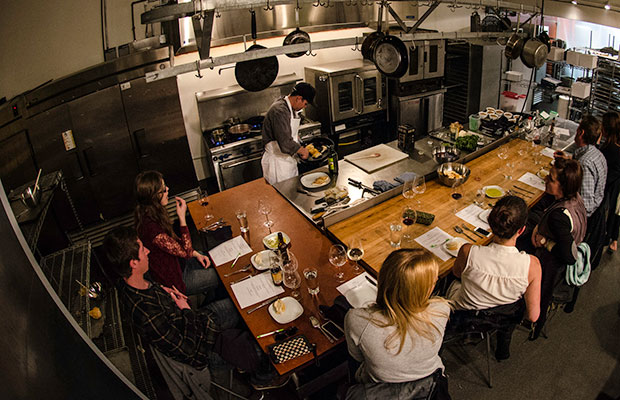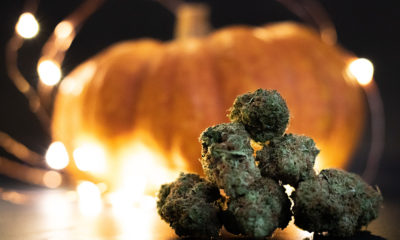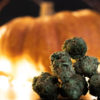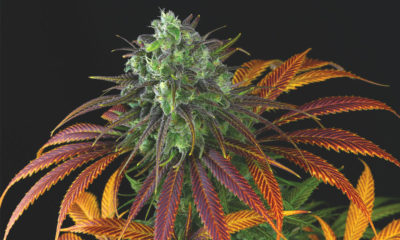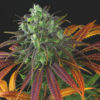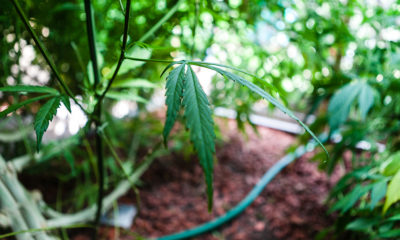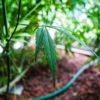Terpene Pairing: Cultivating Spirits Matches Food with Cannabis
Beyond the kitchen, terpene and food pairing has become a thriving new industry.
Beyond the red rock vapor caves of Colorado’s Western Slope atop the peaks of the snow-capped Rocky Mountains lies Summit County, home to some of the best ski resorts on planet Earth. It’s also the new home of the world’s most sophisticated cannabis dining experience — Cultivating Spirits. Cultivating Spirits provides tourists and locals alike with an educational tour through Summit County, a trip to a local dispensary and an intimate food and cannabis pairing session with well-known cannabis chef Jessica Catalano, author of “The Ganja Kitchen Revolution.”
In Prohibition-era America, cannabis dining could be summed up by the simple, grassy homemade weed brownie. But, over the last 20 years, as states began to legalize medical and adult use of cannabis, professional chefs began lending their expertise to cannabis food infusions. Today, in legal adult-use states like Colorado, the cannabis industry’s culinary offerings have become just as detailed as wine pairing, prompting groups like Denver’s Trichome Institute to develop courses and certification programs for cannabis sommeliers. What makes today’s cannabis food so different? It’s all about the terpenes.
Terpenes are essential oils found in a wide variety of plants that are responsible for smell, and to some extent, effects of the plant. In the case of cannabis, each strain has its own unique terpene profile — a fingerprint for that specific strain — comprised of other oils found in a variety of other plants. Terpenes are the reason some strains smell fruity and citrusy or musky and piney. Terpenes also have medicinal effects both in aromatherapy and as consumed in whole-plant cannabis. For instance, the terpene myrcene, which is present in lemongrass and mango, reduces anxiety. Limonene, which is responsible for the citrusy smell of strains like Lemon Skunk and Tangie, works as an anti-bacterial, anti-depressant and anti-cancer agent, among other uses.
Catalano has largely pioneered strain-specific cannabis food pairing, starting with a personal blog before being tapped to compile her recipes in a book.
“Cannabis has been a long love affair for me,” Catalano says.
At Cultivating Spirits, Catalano has teamed up with cannabis entrepreneur Philip Wolf to create a setting for guests that’s not just about good food and good bud, but also responsible use and appreciation for all the nuanced flavors of cannabis. Together, they create a unique experience for guests that celebrates all the plant has to offer.
“We are trying to teach people how to incorporate this into their lifestyle responsibly,” Wolf says. “We want to step away from the standard stoner culture that Middle America sees all the time and incorporate this educational aspect to it.”
A Rich Experience
Catalano prepares the menus around seasonal fruits and veggies locally available and what’s fresh at the dispensary. After touring Summit County in the back of a 420-friendly limo, the Cultivating Spirits tour stops at High Country Healing. With a location above 11,000 feet, it can be considered the highest dispensary in the world.
Wolf shows guests around the dispensary’s grow operation before guiding them through the selections available with an eye on what will be prepared for dinner. For most guests, it’s the first time they have seen a real-life grow operation in person and for many it’s a life-changing event.
Wolf says that as a pioneer in Colorado’s legal cannabis market, he knows the experience he provides guests is not just fun and educational — it’s political. Because he’s at the front line between voters from out-of-state and the concept of legal adult-use marijuana, Wolf acknowledges the cannabis culture is often intimidating to newbies and caters to this market.
“People come to learn about both the medical applications as well as how to enjoy luxuriating with cannabis,” he says. “It is really fun to see the different reactions — every tour is different. I am really happy we have the responsibility because we are doing it the right way.”
Wolf says guests have traveled from as far away as New Jersey and Texas, but that they are just getting started. As Colorado continues to connect its ski industry with its cannabis industry, Catalano and Wolf expect to meet and feed cannabis enthusiasts from around the globe.
“It’s not just about marijuana, it is about creating the ultimate experience that touches on all six senses through food and cannabis,” Wolf says.
Inside the Cultivating Spirits industrial kitchen, Catalano entertains guests while preparing meals perfectly paired with the cannabis they have just purchased and smoked outside in their brand new clean pipes — provided as part of the tour.
Catalano bruises and tastes strains to garner inspiration and prepare the menus. Over the last four years she has paired hundreds of strains with meals for patients and recreational users alike and has perfected the art. She says the most memorable strain so far has been Kong, which she calls “the wildest smelling thing ever.” Catalano says Kong has heavy diesel overtones and is best paired with earthy foods, like pumpkin.
Today, inspired by the cheesy-fruity scents of The White and Afghan Haze fresh from High Country Healing, she has prepared a mouth-watering baked brie with fruit compote and fresh honey crisp apples tossed in vanilla and cinnamon served on freshly-broiled toast. Catalano is a wealth of information and happily answers any burning questions from her audience as she casually throws together the gourmet dish.
Cannabis Connoisseurship
Beyond the kitchen, terpene and food pairing has become a thriving new industry. Max Montrose, founder of the Trichome Institute, has begun enrolling courses for cannabis sommeliers or cannabis experts trained to smell a bud and determine its taste, effects and optimum food pairing. Montrose has worked for the last decade as an activist and cannabis industry worker with experience at all levels — he has worked in caregiving, dispensing, growing, extracting, infusing and testing cannabis.
Montrose said he created the Trichome Institute in response to the “extreme lack of knowledge surrounding cannabis.” The Institute has utilized international research to create guides and text materials that are current, accurate, medically-backed and scientifically-proven.
“A cannabis sommelier is an interpener and practices the art of interpening,” Montrose said. “That means to interpret the terpenes and bud structure of the plant to determine its strain, potency and quality. Like a sommelier, interpening is fun for entertainment purposes, yet it also has a much more serious application. It’s crucial that a budtender can detect the effect of a specimen in order to properly suggest which strain is appropriate for medical needs or recreational fun. You can actually see and smell how a cannabis flower will affect you if you know what to look for and that’s what the Trichome Institute teaches people on all levels.”
Montrose has taken the research a step further and has assisted a team of scientists at Colorado University who are creating a cannabis research genomic initiative to better understand the synergistic effect of the cannabinoids and terpenes as they vary from strain to strain.
In 2012, Napa Valley Vitners Association of Napa County, California’s wine industry estimated that wine tastings and tourism rakes in about $13 billion annually and has a total value to the United States economy of $50 billion. While Prohibition-era laws have impeded a similar financial boon in the marijuana industry, the domino effect of legalization promises to deliver a mature cannabis-tasting market that could eventually rival that of Napa County.
Until then, most cannabis tastings will have to be done from home — but for a taste of the future, Cultivating Spirits has got it covered.
This article was originally published in Issue 14, available for purchase here.
Have you ever tried to pair cannabis with different foods? Let us know what worked in the comments.



